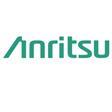In order to maximise return on investment (ROI) and overall equipment effectiveness (OEE), selecting the best inspection and detection technology for your needs is essential.

Meat, poultry and alternative meat processors are incorporating inspection technologies to safeguard protein products from potential foreign material contaminants to protect consumers, minimise consumer complaints and protect their brand from costly product recalls.
Choosing the right product inspection and contaminant deduction solution can be a daunting task. The end result is vital to the efficiency of plant operations and ultimately provides a high return on investment.
Meet Your Detection Goals and Maximise ROI and OEE
This white paper from Anritsu outlines how to choose an X-ray inspection system with a longer life than conventional models and a more efficient cooling system with less power consumption that results in a reduction in lifetime costs.
Less obvious aspects of cost and performance are highlighted in this guide along with updates on recent technology advances and trending sanitation demands.
These tips can help in choosing a system that not only meets detection goals but does so in a way that maximizes ROI and OEE. With the continued trend of downward cost pressure in the industry, food processors are increasingly paying attention to line efficiency using measures such as OEE.
Key performance indicator

Many production plants are adding OEE as a key performance indicator to their operational metrics. Boosting the yield of production lines, by reducing false rejects, is one efficient way to increase the output of an operation without the capital costs and space required to install additional lines
The OEE metric is comprised of three factors: machine uptime, process yield, and speed to determine the overall effectiveness of equipment. False rejects are a waste of good product. They directly impact process yield and thus OEE of the line. X-ray systems with superior detection capability (i.e., smaller than your specification) improve your process yield by reducing false rejects.
In addition to reducing false rejects, superior detection capability provides flexibility to have a higher level of detection on an “as needed” basis. Imagine a scenario where you know something was accidentally dropped into a batch. Detection levels could be increased for a period of time to ensure the contaminants are found.
Clean design solutions
The white paper also details how equipment design can impact sanitation operations. While performance and cost are the most important criteria in your decision, customers are increasingly requesting clean design. Customers are looking to streamline sanitation processes and eliminate hiding places for biological contaminants.
Design features such as easy parts removal/attachment, easy-to-clean conveyors, one-touch removal of shield curtains, and removal/attachment of rollers without tools can all streamline the cleaning processes. More efficient cleaning contributes to ROI.
Learn How To Maximise Performance, ROI, & OEE With Our X-Ray Inspection White Paper
To find out more email Eva Bar on eva.bar@anritsu.com or visit www.anritsu.com














